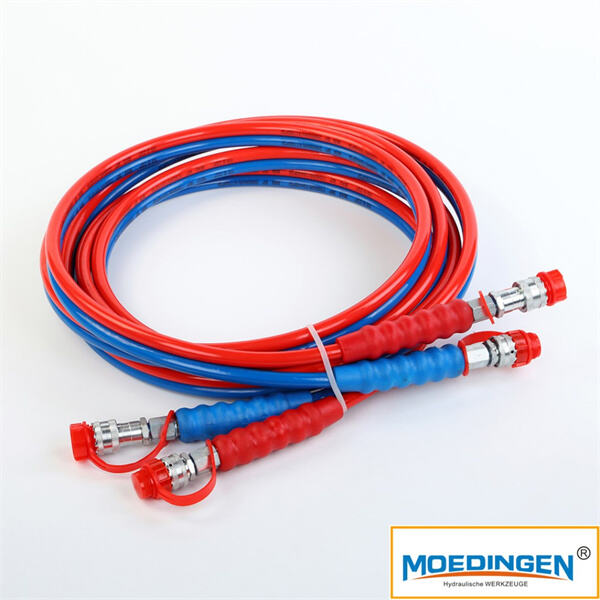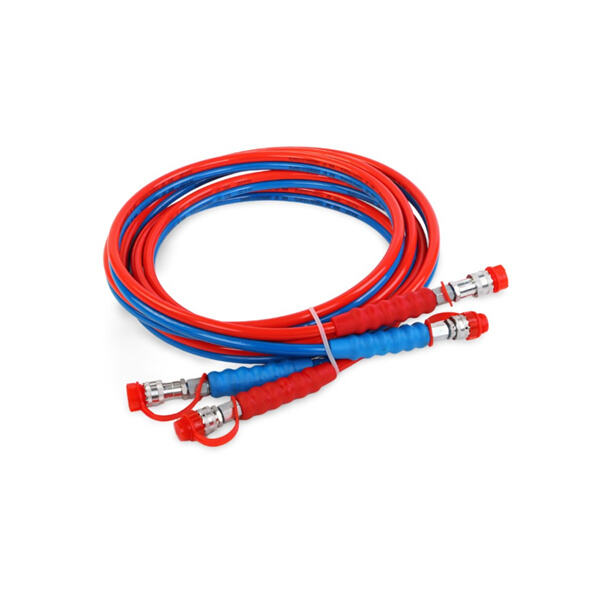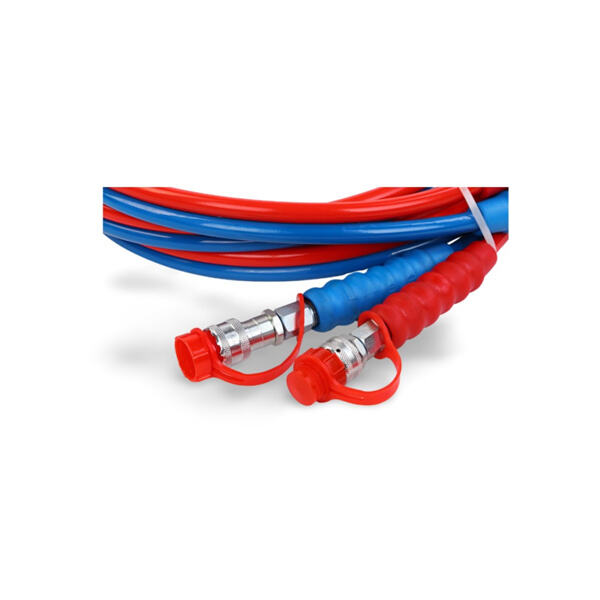Es sind die, die eine sehr wichtige Rolle in ihrer Funktion spielen und die in vielen Maschinen, die auf Hydraulik basieren, umfassend eingesetzt werden. Stellen Sie sich jetzt für ein konkretes Bild der Bedeutung die Hydraulik als den Muskel in diesen Maschinen vor. Hydraulik ermöglicht es Maschinen, Arbeit auf dieselbe Weise auszuführen, wie Muskeln helfen, schwere Gegenstände zu heben oder Dinge von einem Ort zum anderen zu bewegen. Dies macht die 1 2 Hydraulikschlauch ähnlich wie die Adern bei großen Tieren. Diese enthalten Flüssigkeit, die Hydraulik ermöglicht. Diese Schläuche ermöglichen es Maschinen, ihre Aufgaben besser auszuführen, was die Qualität vieler Gegenstände verbessert, die wir täglich verwenden.
Beim Auswahl eines hydraulischen Schlauches sollten Sie einige wichtige Parameter berücksichtigen. Beginnen Sie damit zu überlegen, mit welcher Maschine Sie den Schlauch verwenden werden. Die Schlauchanforderungen einer Waschmaschine unterscheiden sich von denen anderer Geräte, daher wird Ihnen dies helfen, den richtigen auszuwählen. Sie müssen auch wissen, welche Art von Flüssigkeit durch den Schlauch fließen wird. Es gibt viele Klassen von hydraulischen Schläuchen, die für unterschiedliche Temperaturen und Drücke geeignet sind. Einige Schläuche sind zum Beispiel so konstruiert, dass sie in sehr heißen Bedingungen verwendet werden können, während andere hohen Druck aushalten.
Die Größe des Schlauchs ist ebenfalls ein weiterer Aspekt, der berücksichtigt werden muss. Wenn die Anschlüsse und Kupplungen ausgewählt wurden, die in Ihrer Maschine verwendet werden sollen, muss der Schlauch passen. Dies kann zukünftig Probleme verursachen, wenn Sie es falsch machen. Mit der richtigen Wahl des hydraulischen Schlauches und unter Berücksichtigung dieser Faktoren wird Ihre Maschine effizienter arbeiten und einen längeren Lebenszyklus haben, wodurch Ihnen Zeit und Geld gespart wird.
Es gibt verschiedene Materialien, aus denen hydraulische Schläuche hergestellt werden können, wobei jedes Material seine eigenen Vorteile und Nachteile bietet. Einige Beispiele sind Gummischläuche, die aufgrund ihrer Belastbarkeit bei erheblichem Druck weit verbreitet sind und daher unter vielen Bedingungen eingesetzt werden können. Diese Eigenschaft trägt jedoch nicht zur guten Hochtemperaturleistung bei, was ihre Verwendbarkeit einschränkt.

Thermoplastische Schläuche sind leichter und flexibler, was sie einfacher im Umgang macht. Sie haben jedoch einen Nachteil: Sie können nicht so viel Druck aushalten wie Gummischläuche. Metallschläuche können dagegen höhere Temperaturen und Drücke verarbeiten. Sie sind jedoch nicht die leichtesten; günstigere Optionen können schwerer und teurer sein.

Unsere hydraulischen Schlauchleitungen unterscheiden sich nicht, da Probleme und Lecks auftreten können, genau wie jeder andere Teil einer Maschine, wenn sie nicht richtig gepflegt werden. Abschürfungen, Knicken und Zermalmen sind einige der häufigen Probleme. Mit Schläuchen muss vorsichtig umgegangen werden, um diese Probleme zu vermeiden. Behandeln Sie die Leitungen nicht zu aggressiv, um sie zu verziehen und zu verdrehen, da Sie sie sonst beschädigen könnten.

Leckage aus mehreren Gründen. Dies geschieht oft, wenn die Anschlüsse oder Kupplungen nicht richtig festgedreht sind. Wenn die Schlauchleitung gerissen oder sonst beschädigt ist, können auf diese Weise Lecks auftreten. Routinemäßige Inspektion und Wartung sind großartige Möglichkeiten, um diesen Problemen vorzubeugen. Sie können solche Probleme verhindern, indem Sie proaktiv handeln und die Leistung Ihrer Hydraulikschläuche sicherstellen, mit geringerer Wahrscheinlichkeit zu Schaden zu kommen.